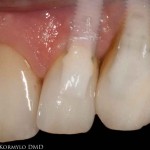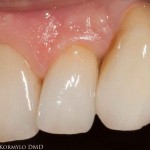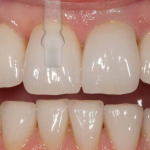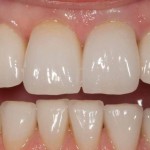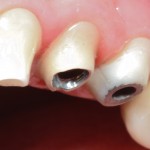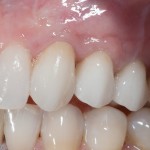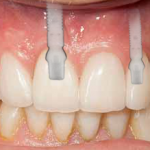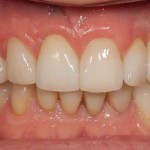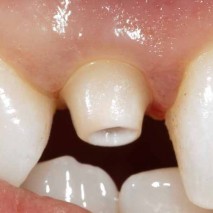
An Implant abutment is what connects the crown you see in the mouth to the implant replacing where the tooth was lost.
The threaded post you see in the radiograph above is the implant. The neck or “abutment” is anchored in the implant by a screw that will become the foundation for a crown visible in the mouth is cemented on top.
The implant is ideally placed well below the gum line as seen above. In this photograph, there is only a slight shadow revealing the actual implant without the abutment.
The surgeon will place the implant and allow the area to heal for a period of time. The metal object above is usually what the patient sees during the healing stage. This is an example of what is called a healing abutment. It is used to help shape the tissue so it appears more like the natural root emerging from the gum line.
Once the implant is ready to support a tooth, the metal healing abutment is removed and a custom abutment is crafted to appear like a natural tooth prepared for a crown. The process of replacing a natural tooth with an implant can take up to a year to complete but if managed with care and finesse, results can be remarkably lifelike and satisfying for a lifetime.









